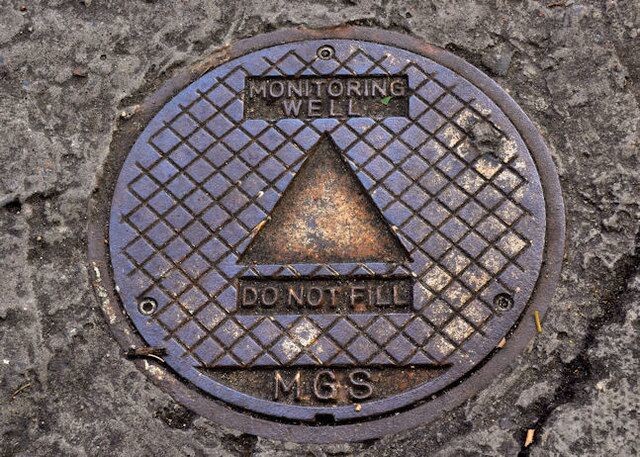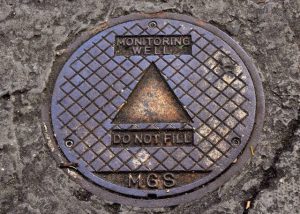
When You Find Out Your Property Isn’t As Clean As You Thought It Was…
If you’ve ever received a report of contamination despite the fact that you’ve never run an operation that could potentially have caused it, then you may want to read on to understand how to deal with the situation.
When this happens, it usually blindsides the landlord or Seller, assuming they purchased the property with clean environmental reports…
And so, it is always good business practice to know more about the building you are selling than a prospective Buyer.
If you’re getting the tough news after the fact, then moving forward is usually going to be more challenging.
It’s going to take longer.
And you’ll likely be limited in your options.
Especially when you never did anything wrong…
(But somehow your site ends up contaminated due to concealed localized spills or careless neighbouring operations’ leaks seeping under into your land.)
Because unlocked (and maximized) value really goes to the person who is best prepared.
So if you offer your property for sale without conducting an up to date Environmental Assessment beforehand…
And you leave it up to the Buyer to do that, then the Buyer:
1) Will know more about your own property than you, and
2) At the end of the Due Diligence period, the Buyer will have more perceived control if something is not right… meaning they will be in a power position to negotiate the final deal, instead of yourself, the Seller.
In addition, if the final outcome is not 100% perfect – i.e. if such Environmental Assessment uncovers a certain level of contamination that needs to be remedied (which could be done in advance, or at least quantified in terms of cost of hiring a professional remediation company)…
- Then, not only will you lose your leverage, but:you may have trouble getting financing from banks,
- you will lose 45 days (or more) to the Due Diligence process,
- you will lose a further 90+ days in remediation, and
- you will lose momentum in the marketing and sale of the asset.
Lastly, in some cases, many Buyers simply walk away at the first signs of ‘contamination,’ which may possibly create a stigma around the site moving forward.
So, in conclusion, you cannot let the Buyer do the Due Diligence for you – no matter how costly or scary that may seem to you – unless you’re willing to risk time, leverage, positioning, opportunity cost, and the reputation of the property.
Then you may ask yourself, how does one recover from this?
Well, in this article, we will outline the steps you can take to move forward and regain leverage as an owner – using another real-life case study.
We are into the fifth article of our series on Due Diligence, where we are diving into the different types of due diligence, case studies of successful assessment and remediation, and what exactly to look out for when preparing your property for sale.
Today we will examine our second case study. So let’s begin…
36,700 SF Industrial Building,
Toronto, Ontario
Project Overview
Cushman & Wakefield’s Team of Goran Brelih & Diana McKennon were mandated by the property owner to assist in the disposition of their 37,600 SF building.
We recommended that the Seller undertake Phase I and Phase II (if required) Environmental assessment to identify potential environmental concerns associated with current and historical activities at the site and surrounding properties.
The Phase I Environmental Site Assessment (ESA) uncovered potential environmental concerns from past and/or current activities at the subject property and surrounding properties, including potential significant contamination migration on neighboring properties.
Therefore, a Phase II ESA (groundwater and soil investigation) was recommended to be completed to assess the subsurface conditions.
Phase II ESA included subsurface investigation including 9 boreholes (3 interior, 6 exterior) with 5 groundwater monitoring wells installed.
Groundwater samples uncovered significant increase in exceedance of Table 3 standards in Lead, Tricholorethylene, Vinyl Chloride, PHC F3, PHC F4, cadmium, copper, and zinc, while soil samples showed exceedance of Table 3 standards in Lead, Zinc, Arsenic, and Benzo(a)preyne.
The soil and groundwater contamination were both attributed to the past onsite industrial operations, as well as localized spills or leaks at the neighboring properties.
At that time, additional subsurface investigations were recommended to further delineate the extent of the impacts on the subject site, as well as to determine the possible sources of contamination.
Risk assessment study was commissioned by the Vendor in order to assess the potential impact on human health and ecological risks associated with present contamination.
Even though exceedances from Table 3 standards were noted in the soil and groundwater, the Risk Assessment study concluded that certain risk management measures could be implemented to minimize exposure.
Furthermore, given that the source of VOC contamination in groundwater may be coming from off-site, it was recommended that ongoing groundwater monitoring be conducted to ensure that future concentration does not exceed the MOECC’s health based component values protective of the vapors of indoor air.
Final Outcome:
Following the Phase I, Phase II, and Risk Assessment studies, a peer review and recommendations to obtain financing were provided by a third party environmental engineering firm.
A recommendation was provided to install at least 1 additional borehole beneath the building slab to:
- assess VOC concentrations in groundwater under the building,
- conduct a more extensive peer review of the previous reports with the intention of determining the likely sources of the VOC’s,
- measure groundwater flow direction to assist in determining the likely source areas, and
- address the issue of unknown future VOC loadings to the site.
This was done by:
- conducting long-term groundwater monitoring;
- installing a barrier along the property line with off-site sources; and
- ensuring the sources take action to prevent any further migration to the site.
The Purchaser was provided with a Letter of Reliance for previous work completed by the Vendor.
Most importantly, based on all the work completed and based on the final Risk Assessment Study that was put in place, the Purchaser was able to secure financing for this site and Vendor was able to conclude the sale with minimal impact on the final price/value.
Result: Transaction Successfully closed.
**Disclaimer: The information provided is intended for general educational and informative purposes ONLY, and is NOT intended to be taken as legal, environmental, or tax advice.
Talk to your lawyer, accountant, attorney, or environmental or planning consultant before taking action.**
I hope this can give you an idea of the general process used when doing an Environmental Site Assessment, Remediation, or Cleanup. Please note, that each case is unique and would require an expert opinion and guidance.
If you would like some help with your property, let us know, and we will do our best to point you in the right direction.
Next article, we will go through another case study of a real property that had to undergo various forms of Phase1, Phase 2, and site remediation.
Until then…
Goran Brelih and his team have been servicing Investors and Occupiers of Industrial properties in Toronto Central and Toronto North markets for the past 25 years.
Goran Brelih is a Senior Vice President for Cushman & Wakefield ULC in the Greater Toronto Area.
Over the past 27 years, he has been involved in the lease or sale of approximately 25.7 million square feet of industrial space, valued in excess of $1.6 billion dollars while averaging between 40 and 50 transactions per year and achieving the highest level of sales, from the President’s Round Table to Top Ten in GTA and the National Top Ten.
Goran is currently serving as President of the SIOR ‐ Society of Industrial and Office Realtors, Central Canadian Chapter and on the Board of Directors of Muki Baum Accessibility Centre, a Toronto‐based NGO which provides support to children and adults with complex disabilities.
Specialties:
Industrial Real Estate Sales and Leasing, Investment Sales, Design Build and Land Development
About Cushman & Wakefield ULC.
Cushman & Wakefield is a leading global real estate services firm that delivers exceptional value by putting ideas into action for real estate occupiers and owners. Cushman & Wakefield is among the largest real estate services firms with 48,000 employees in approximately 400 offices and 70 countries. In 2017, the firm had revenue of $6.9 billion across core services of property, facilities and project management, leasing, capital markets, advisory, and other services. To learn more, visit www.cushmanwakefield.com or follow @CushWake on Twitter.
For more information on GTA Industrial Real Estate Market or to discuss how they can assist you with your real estate needs please contact Goran at 416-756-5456, email at goran.brelih@cushwake.com, or visit www.goranbrelih.com.



